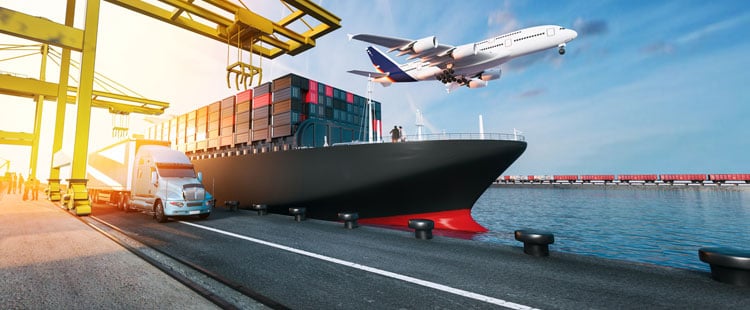
International shipping is a complicated industry, and some freight forwarders will take advantage of that complexity to win your business.
One way to detect misleading quotes is staying informed about the many variables that factor into a quote. Some change every decade or so, while others seem to change with the season.
Comparing quotes should be like comparing apples to apples, but if you don’t know what to watch for, you might be looking at prices for very different levels of service.
It’s difficult to hold your freight forwarder accountable if you’re uninformed. Some terms and conditions are used inconsistently between carriers, and there’s no standard for what information you’ll receive in your quote. Knowing all the conditions that factor into your final payment, regardless of the initial quote, will help you avoid bait-and-switch situations.
This post will help you review quotes from different freight forwarders to ensure you’re receiving an accurate quote rather than a merely attractive one.
What Tier Is Their Freight Carrier?

Freight forwarders can engage with carriers that offer varying levels of service, depending on how much you’re able to spend. There are three tiers to describe carrier services, with tier 1 at the premium level.
In each case, you’ll consider the quality of the vessel—air or ocean—and what type of customer service you can expect.
Tier 1 carriers like Maersk have newer vessels that run on the latest best practices. They’re known for speedy deliveries and good customer service around the globe, which is quite a feat when you account for things like language barriers and time zones. These might sound like table-stakes, but they aren’t. It takes experience and resources to be able to provide tier 1 service.
Another thing to consider is where a tier 1 carrier might save you money. Tier 2 or tier 3 carriers might get your shipment to its destination but have a backlog of inbound freight to process, so your goods end up sitting there for a week. Even if they hit the arrival date, if your cargo is caught up in offloading or palletizing, then you haven’t really received your shipment.
Many tier 2 and 3 carriers do not sail directly to their destination, but instead pick up additional cargo at other ports of call before the main carriage. They may also have other stops at the destination country. These extra stops make for a longer cargo journey. So, in considering price, there’s often a trade off with shipping time.
Maersk is a massive company, but not all tier 1 providers are big like them. Consider Matson, a small steamship line with a 12-day service from Shanghai to Los Angeles. That’s about two or three days quicker than other carriers, plus they own all the aspects of their supply chain.
They have a smaller boat and more overhead, so they charge a premium. However, you have a single company handling your shipment from door to door, which can feel like a white-glove experience compared to tier 3 carriers.
What Incoterms Are Used In The Quote?
Incoterms is short for International Commercial Terms, and carriers will selectively pick and choose which ones they use in your quote. This is because incoterms are an encouraged aspect of global trade rather than a regulated standard.
There are three parts to every international shipment:
- In-land transportation and arrival at the air or ocean port from which its departing, called pre-carriage
- Transportation across air or sea, or carriage
- Delivery from the destination port to whatever location you choose, called on-carriage
Incoterms were created as a boilerplate for carriers to use in their contracts, to standardize who pays for what under every circumstance. That’s why there is some inconsistency in which ones you’ll end up paying.
For example, one quote might be using the “Delivered at Terminal” incoterm where another might be using “Delivered at Place.”
The former will get your cargo to the terminal or other named destination and unloaded, but Customs brokerage, on-carriage, and beyond that is on you. Whereas “Delivered at Place” allows you to determine a location, like your warehouse, where the carrier will deliver your shipment. Obviously, the latter will be more expensive than the former because you are responsible for additional segments of the cargo’s voyage, which means you will assume more cost.
Does the Quote Include Surcharges?

There are around 200 different surcharges that might be applied to an international shipment.
Many carriers won’t include them in your quote for two reasons. They increase the price and they are hard to determine without information only you can provide. If you don’t know which information is important to your carrier for assessing surcharges, you run the risk of getting blindsided by them. While it’s best practice for a carrier to proactively determine what surcharges, if any, you might encounter, some won’t.
1. Security Fees
One common surcharge is security. The cost of security can vary by location or political climate. If there’s conflict in a region, your security cost will be significantly higher than if you were moving cargo through that area during a peaceful time.
2. Fuel Charges
Another common surcharge is fuel. Prices for fuel change regularly. Depending on the market, you could be quoted a fuel surcharge at one price and end up paying for another. The cost could end up much higher or much lower. Some of this can be accounted for by asking for fixed rate quotes that balance the risk of price spikes for both you and your carrier.
Different regions result in different surcharges, so it’s important to understand all the elements at play moving your shipment from point A to point B. For example, the St. Lawrence River is currently at a low water level, which means any shipments using that waterway are going to incur a surcharge because the navigation difficulty has increased.
Another example is the clean truck fee in Los Angeles. If your shipment arrives at an L.A. port, you have to pay a clean truck fee when you pick up your container. If you want to pick it up during the day, you will pay for a pier pass. They use these surcharges to try to offset congestion, a problem specific to that region. You might not deal with these types of surcharges at a different port.
3. Peak Season Charges
Supply and demand play a critical role in the surcharges that freight forwarders pass along from carriers. During times of high traffic, peak season surcharges (PSS) and general rate increases (GRI) become common place. Some freight forwarders do not include these in their quote though the importer is still on the hook for them if they are applicable. Depending on the volume you plan to ship, sometimes your freight forwarder can help you mitigate—or potentially eliminate—these fees.
Understand Dimensional Pricing and Container Loads
Before asking a freight forwarder for a quote, determine whether you’ll be shipping a less-than-container load (LCL). This means that your shipment isn’t enough to fill an entire container and will share space with other cargo. When this happens, you’ll be paying based on the dimensions of your cargo—how much physical space it takes up—or the weight of it, whichever is more.
You’ll also pay more for handling because LCL shipments are more labor intensive than full containers. The carrier has to not only fit your shipment into a container at the departing port, but also remove, separate, and repalletize your goods on the receiving end.
Offer Lots of Information to Ensure Transparency
You can avoid a lot of headaches by knowing exactly what information your freight forwarder needs to provide you with an accurate quote. The more you’re able to share up font, the better. Also, by showing that you know your stuff, you’ll scare off any less ethical carriers who might attempt a bait-and-switch at your expense.
Know your cargo, your incoterms, and know what kinds of surcharges to ask about. Incoterms can be found online, and many surcharges are also public knowledge. It might be worth asking each potential freight forwarder to provide a list of surcharges the carrier may regularly encounter. If they’re reluctant to do so, it’s a good sign you should keep looking.



